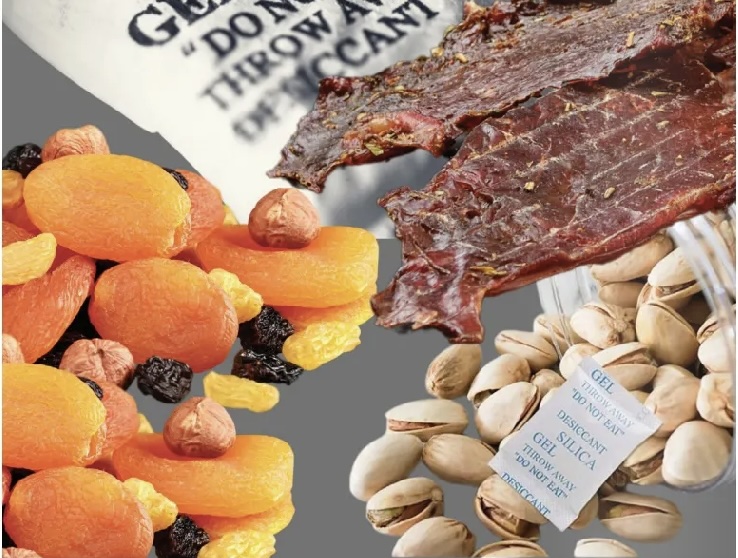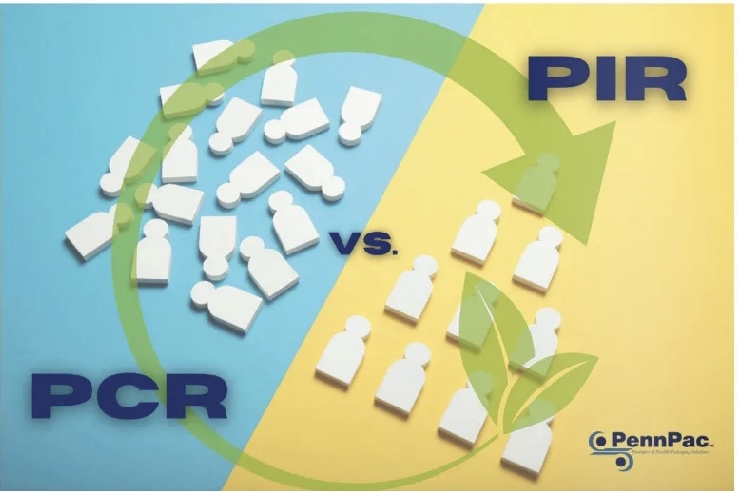Flexible Packaging — In a Constant Cycle of Evolution
- Published: June 17, 2024
By Rob Tiller, Managing Director, PennPac
Just when we think flexible packaging films have reached a milestone of innovation, technology kicks things up another notch. From pharmaceuticals to food, various product lines are protected and preserved with eye-catching packaging, improving shelf presence. At the same time, current packaging plays a crucial role in eco-friendly efforts, including sustainability. The recent breakthroughs in flexible packaging technology offer a blend of versatility and functionality. Persistent evolution of product packaging is revolutionizing environmentalism in ways never imagined. This brief read will explore some of the latest trends and technologies which continue to impact consumer, environmental and industry demands.

Active Packaging - It's Alive!
Since the days of the Industrial Revolution, numerous imaginations achieved what many thought as impossible. As time passed, an economy once based on low-volume agriculture and handmade items became mechanized, leading to today's mass production manufacturing across the globe. As we have seen, large scale manufacturing production comes with its share of loss, or scrap. Helping to reduce such loss is a fascinating technology named Active Packaging (AP). What makes AP so important and impressive? Well, it's a low-risk, effective and active packaging system that improves product shelf life, without sacrificing flavor quality or food safety. Two common examples of AP are the incorporation of a functional material comingled into the product package itself, or simply placing an active component into a package film lamination structure.
For instance, if you open a bag of your favorite beef jerky, you'll typically find a small pouch of silica gel, or similar desiccant. This acts as a drying agent to help prevent excessive and unwanted moisture from damaging the product and altering the intended flavor. Inversely, this magical little pouch can also add surplus moisture it collects if the product becomes too dry. Along with jerky type pouches, you'll also find this type of system in dried fruit and nuts.
In addition to its use in food packaging, this style of AP is also used in other consumer products including sneakers, electronics and clothing.
For an integrated packaging example, suppose you have a product like a vitamin, which may be sensitive to UV light and/or heat. Engineered UV filter medium can be added to the lamination structure of the package to actively protect the product while it is on the store shelf, or even in the home. This is also the case in rigid packaging like a tray or a capped medication bottle.
Regardless of the type AP used in many of today's grocery stores, general merchandise or healthcare items, you can rest assured that all packaging compositions with such additives (physical or integrated), must adhere to all food, pharmaceutical and consumer product safety standards.
Acknowledging Barriers
While most consumers focus their attention on price, brand and general appearance of the product, we unknowingly bypass the importance of barrier properties packaging films provide. Not only does packaging create an attractive and informative shelf presentation, it also provides the moisture, oxygen, oil, gas and light barriers essential for maintaining freshness. Those steaks, sausages and chicken breasts appear fresh through the heat-sealed and crystal-clear packaging films.
A perishable product's additives or natural formulation may be negatively impacted by many of the forementioned properties, in addition to others such as flavor and odor. What films) get used for which product is simply determined by which specific ratios of water, oxygen, etc. need to remain within. It's all about the migration control of what you can't see!
Let's touch on the basic types of barrier film substrates used in the packaging of many of our favorite products to maintain necessary shelf-life quality. Polyester (PET), Metallized Polypropylene (MPP) Ethylene Vinyl Alcohol (EVOH), Polypropylene (PP),
Polyethylene (PE) and Nylon (PA) are the most common materials creating many of the laminate structures used in most food packaging applications.
While each material provides its own array of characteristics, respectively, they are often strategically combined in lamination structures by both packaging engineers and food scientists, with a common goal — to minimize food waste.

Sustainable Mindset— PCR vs. PIR
We hear about protecting our environment almost daily, regardless of region or country. Regulations and global pressures continue to dictate the future of packaging formats. A common driver behind flexible packaging films is the proportions of recycled content. Both consumers and brand owners are influencing packaging engineers and contract packagers to incorporate both Post-Consumer Recycled (PCR) and Post-Indus-trial Recycled (PIR).
While PCR materials have already been used by consumers for their intended purpose, these materials continue to maintain future purpose, using traditional curbside recycling processes.
PIR materials, on the other hand, have yet to make it into the consumer-use streams. Therefore, they are recovered and reused in a much more efficient and cost-effective manner, ultimately reducing logistics emissions and unnecessary packaging efforts.
While research has shown no single packaging method (glass, plastic, metal, paper, etc.) can be applied to all our various packaged products, we can strive to use each in their most sustainable state. Using compostable and plant-based materials, for example, along with PCR/PIR materials, we can continue building an environmentally conscious future.
The Evolution Continues with Collaboration
In summary, flexible packaging films continue to play an instrumental role across supply chains. While the products inside vary, the technology and innovation advancements remain in forward motion. From protective barrier properties, to functional integrated packaging systems, flexible film technology continues to offer practical solutions that enhance product safety and longevity.
Embracing a global reuse campaign for flexible film packaging provides us an opportunity to work together and drive change. Collaboration from brand owners across private and public sectors, along with an educated and motivated society, will eventually close the loop of reuse. With many years of packaging design to learn and share ideas from, we are well placed to continue the cycle of flexible packaging evolution.
About the Author
Rob Tiller surrounds himself with a team of industry experts, together providing PennPac's customers with a friendly and reliable experience. Customers around the country and across many industries - food and beverage, consumer healthcare, industrial, fulfillment, medical and more - trust PennPac's customized solutions for their supply of flexible packaging films.



